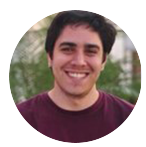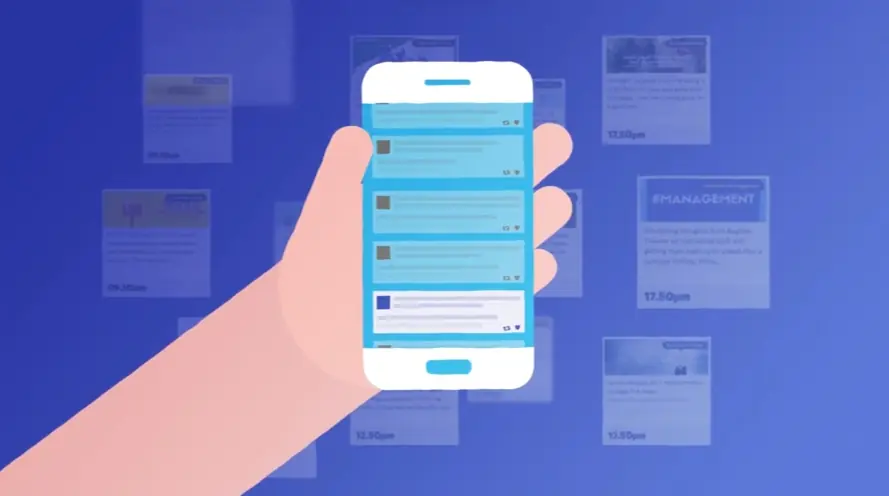
What three core elements make a compelling app onboarding video?
Compelling onboarding videos combine a clear value proposition, concise how-to steps, and engaging visuals.
How can a narrative structure enhance user engagement in an app tutorial?
A narrative structure transforms tutorials into captivating stories, increasing user engagement and retention.
How can storytelling showcase app benefits in a new user onboarding video?
Storytelling showcases app benefits by connecting features to user needs, making the value clear and memorable.
What visual style best resonates with new app users during onboarding?
A clean, intuitive visual style with clear graphics and smooth transitions best resonates with new users.
How can an app onboarding video maintain engagement, even if lengthy?
Maintain engagement in longer videos by varying pacing, incorporating diverse visuals, and using interactive elements, breaking information into digestible chunks.
How can accessibility best practices be implemented in app onboarding videos?
Implement accessibility best practices by including captions, transcripts, and audio descriptions, ensuring inclusivity.
What clear call to action drives user behavior after an onboarding video?
A clear call to action, such as "Start free trial" or "Explore now," directs users towards desired post-video actions.
How do SaaS onboarding videos improve user activation and retention?
SaaS onboarding videos improve activation and retention by providing clear guidance, reducing confusion, and showcasing value quickly.
What existing marketing content can be repurposed for onboarding videos?
Repurpose existing marketing content like website copy, blog posts, and social media updates for onboarding videos.
How can an onboarding video ensure a seamless first-time user experience?
Onboarding videos ensure a seamless first-time user experience by guiding users through initial setup, key features, and common tasks.
What tone and style effectively engage new users in onboarding videos?
A friendly, encouraging tone and a clear, concise style effectively engage new users.
How can an onboarding video quickly answer common new user questions?
Onboarding videos quickly answer common questions by anticipating user needs and addressing them proactively.
How can an onboarding video simplify initial app setup for new users?
Simplify initial app setup with step-by-step instructions, visual demonstrations, and clear explanations.
How can personalization be incorporated into app onboarding videos?
Personalize onboarding by addressing users by name or segmenting videos based on user roles or demographics.
How can onboarding videos proactively reduce customer support tickets?
Onboarding videos proactively reduce support tickets by addressing common questions and providing clear guidance. Typical project costs range from $1,000 to $6,000 for a 60-second video, depending on complexity, with a turnaround time of 3-8 weeks.
Beyond the Basics: Deep Dive into App Onboarding Videos
Moving beyond basic understanding what an App Getting Started Video is, teams explore deeper strategies maximizing impact. Users frequently seek video learn about products; statistics show ninety one percent watch video understand product better. More than half customers fifty six percent prefer video over reading learning product. Visuals truly powerful; brains process visual information sixty thousand times faster text. Effective video onboarding experience leads significant improvements. Apps strong onboarding yields 50% higher retention rate. Videos under minute hold attention better sixty eight percent viewers. These videos crucial reducing learning curve, breaking complex software functions digestible pieces. Video also helps users retain information longer increasing confidence product usage.
Deep dive into techniques making these videos compelling involves more personal approach. Visual storytelling key simplifying complex concepts; this approach evokes emotions creates connection making onboarding experience memorable. Integrating interactive elements within videos significantly increases user engagement information retention. Such elements also provide valuable measurable insights user performance understanding. Further enhancing engagement personalized videos tailored specific user roles industries resonate deeply viewers.
Consider strategic placement ensure videos reach users when needed most. Integrating videos knowledge base help center supports users preferring visual learning whenever they need refresher. In-app pop-up videos triggered user behavior guide them specific features contextually. Embedding onboarding videos direct user dashboard interface guides users first time they navigate. To refine approach continuously track video analytics view counts watch duration interaction rates. Analytics help identify drop-off points engagement peaks allowing optimization content future video creation. Additionally ensuring digital accessibility through captions voiceovers audio descriptions important inclusive user experience.
Story based demos consistently drive higher completion rates stronger user adoption compared feature focused videos.
Including friendly face team member video creates human connection builds trust users.
App demo videos integral part App Store Optimization boosting discoverability downloads conversion rates.
Aim eighty percent video representative actual in-app user experience when creating app store previews build accurate expectation.
Why Advids for App Getting Started Video?
At Advids, we create compelling App Getting Started Videos that drive results. Our blend of creative storytelling, advanced technology, and proven experience ensures your vision translates into effective animation. We've completed over 3400 successful projects for clients ranging from startups to Fortune 500 companies, including brands like Razorpay, Ola, Mercedes, the United Nations, Continental, and Mercer. Over 109 five-star Google reviews speak to our commitment to client satisfaction.
Your App Getting Started Video, Perfected:
Tailored Solutions: From explainer videos to character animations, we customize every App Getting Started Video to your brand, style, and target audience. We've produced between 185 and 470 successful App Getting Started Videos.
Engaging Narratives: Our animators and storytellers craft captivating narratives that resonate with viewers and inspire action.
Cutting-Edge Technology: We utilize the latest software and techniques to create visually stunning and impactful videos.
Experience and Expertise:
12+ Years of Success: Our extensive experience ensures your App Getting Started Video is truly effective.
Trusted by Leaders: Industry leaders trust Advids to bring their stories to life through animation.
Client-Focused Approach: We prioritize collaboration and open communication throughout the entire process, from concept to completion.
A True Partnership:
Collaborative Process: We work closely with you, ensuring your vision is realized in the final animation.
Strategic Communication: We prioritize understanding your needs, target audience, and brand identity to create impactful App Getting Started Videos.
Ready to unlock the potential of App Getting Started Video for your business with the latest video design trends of 2024? Let Advids be your trusted partner in transforming your ideas into engaging and effective animated experiences.
Checkout some of the projects and work our team at Advids has been producing:
What is a App Getting Started Video?
An App Getting Started Video is a short, informative video that introduces new users to an app and guides them through its basic functionalities. It serves as a visual welcome guide , showcasing the app's key features, benefits, and how to get started using it effectively. These videos can take various forms, including onboarding tutorials, feature demonstrations, and use case examples, depending on the app's specific purpose and target audience.
App getting started videos are often used to improve user engagement , increase product adoption , and reduce churn . They can also be used as a marketing tool to showcase the app's features and capabilities to a wider audience, potentially driving downloads and increasing brand awareness.
What do top App Getting Started Videos have in common?
Mastering app getting started videos requires focusing on user needs and showcasing the app's unique value.
App Value Proposition - Emphasize the unique value proposition , focusing on a single, powerful benefit.
What makes App Getting Started Video effective?
A thoughtfully designed App Getting Started Video is a powerful tool for onboarding new users and driving app adoption. The effectiveness of these videos is driven by their ability to engage viewers , provide clear instructions, and showcase the app's value proposition.
A compelling App Getting Started Video is a visual story that captures the viewer's attention and guides them through the app's key features and benefits . The video should be concise, engaging, and easy to understand , using a combination of visuals, animations, and clear language to explain the app's functionality and value.
Methods for creating effective App Getting Started Videos include using high-quality visuals, incorporating a clear call to action, and showcasing real-world use cases . By focusing on user benefits and providing clear instructions, these videos can help users quickly understand the app's value and feel confident in using it.
How long should your App Getting Started Video be?
Optimize app getting started video length for maximum impact by aligning video type , content, and user journey stage .
Pre-production Considerations for Determining Video Length:
App getting started video length guide
| App Getting Started Types | Video Length | Use Case | Funnel |
|---|
| Explainer Video | 45-60 seconds | Briefly showcases core app functionality and value proposition using engaging visuals, possibly with a minimalist style animation It highlights key benefits and encourages immediate use. | Awareness/Consideration |
| Tutorial Video | 1-2 minutes | Guides users through basic app features with clear, concise steps using a screen recording style. Focuses on practical application and immediate value. | Consideration/Conversion |
| Walkthrough Video | 1-1.5 minutes | Demonstrates a complete user flow, showcasing the app's seamless experience using a live-action screen recording. Emphasizes ease of use and intuitive design. | Consideration/Conversion |
| Animated Screen Recording | 30-45 seconds | Visually engaging overview of key features and benefits, using a fast-paced style animation. Highlights app's core value quickly and memorably. | Awareness/Consideration |
| Product Demo | 1.5-2 minutes | Detailed demonstration of app features and functionalities, using a cinematic style. Showcases advanced features and caters to more engaged users. | Consideration/Decision |
How to create App Getting Started Videos?
Crafting compelling app getting started videos requires a strategic approach , focusing on clear communication and user experience . Mastering these key phases ensures your video effectively guides users and drives app adoption.
* Define Purpose - Focus on onboarding success ; a clear goal ensures a focused, effective video.- Target Audience - Tailored messaging resonates better; understanding users avoids confusion.
- Scriptwriting - Concise scripts improve clarity; avoid jargon and focus on user benefits.
- Storyboard Creation - Visual planning ensures smooth transitions ; it prevents disjointed narratives.
- Visual Selection - High-quality visuals build trust; professional visuals enhance credibility.
- Video Recording - High-resolution footage ensures clarity; crisp visuals improve user experience.
- Video Editing - Smooth transitions and pacing maintain engagement; avoid jarring edits.
- Effects Addition - subtle animations highlight key features; subtle effects enhance user experience.
- Call to Action - A clear CTA drives conversions; a strong CTA increases app downloads.
- Music Integration - Upbeat music enhances engagement; appropriate music creates a positive mood.
Author & Editor Bio
A video producer with a passion for creating compelling video narratives, Jai Ghosh brings a wealth of experience to his role. His background in Digital Journalism and over 11 years of freelance media consulting inform his approach to video production. For the past 7 years, he has been a vital part of the Advids team, honing his expertise in video content planning, creation, and strategy.
His collaborative approach ensures that he works closely with clients, from startups to enterprises, to understand their communication goals and deliver impactful video solutions. He thrives on transforming ideas into engaging videos, whether it's a product demo, an educational explainer, or a brand story.
An avid reader of modern marketing literature, he keeps his knowledge current. Among his favorite reads from 2024 are "Balls Out Marketing" by Peter Roesler, "Give to Grow" by Mo Bunnell and "For the Culture" by Marcus Collins. His results-driven approach ensures that video content resonates with audiences and helps businesses flourish.



